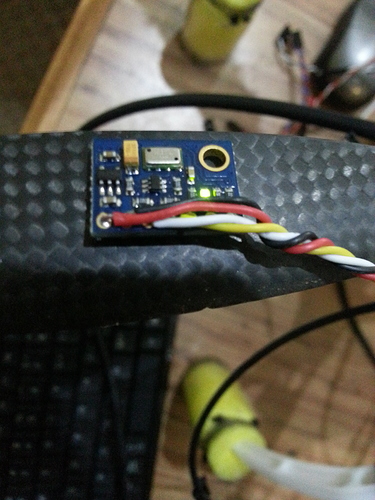@mikhailavkhimenia - I am a little confused on this, I was hoping you could assist…
I was attempting to modify “AP_HAL_Boards.h” in the navio fork of ardupilot, but soon realized it’s different then “AP_HAL_Boards.h” in the original ardupilot.
What’s confusing me is why I am need to use the original ardupilot not the navio fork to configure the external baro? Wouldn’t I want to use the navio specific ardupilot?
I’m sure there is a good reason, I just don’t understand…
Regards,
J
P.S. - Besides the code I’m all ready to go! 
update:
I attempted to cross-compile on ubuntu, but I did something wrong 
this was the result:
pi@navio-rpi ~ $ sudo ./ArduCopter.elf
Raspberry Pi 2 with BCM2709!
Raspberry Pi 2 with BCM2709!
Init APM:Copter V3.4-dev (b9c7cac5)
Free RAM: 4096
FW Ver: 120
----------------------------------------
load_all took 15us
Q���3�Calibrating barometer_RPANIC: AP_Baro::read unsuccessful for more than 500ms in AP_Baro::calibrate [2]
This is what I did:
sudo git clone --depth 1 https://github.com/raspberrypi/tools.git /opt/tools
export PATH=/opt/tools/arm-bcm2708/gcc-linaro-arm-linux-gnueabihf-raspbian-x64/bin:$PATH
git clone https://github.com/diydrones/ardupilot
Then I made the modification for the external baro:
sudo nano libraries/AP_HAL/AP_HAL_Boards.h
I modified
#define HAL_BARO_MS5611_I2C_ADDR 0x77
to
#define HAL_BARO_MS5611_I2C_ADDR 0x76
Then
cd ardupilot/ArduCopter
make navio-hexa
Finally
rsync -avz /tmp/APMrover2.build/APMrover2.elf pi@192.168.1.myip:/home/pi/
I am quite befuzzled, any help would be awesome.
I saw this @ Single Board Computers (SBCs), Computer on Modules, System on Modules
“Supports standard and fast mode of operation (0-400KHz) as well as high speed mode (3.4 MHz).Note: The high speed mode of operation is not l2C 2.1 specification-compliant (requires a current source pull up to be implemented).”
So I changed the baudrate to 400khz, tested, same error, I also lowered to 100khz just to see, same error.
Not sure where to go from here…
![]()






